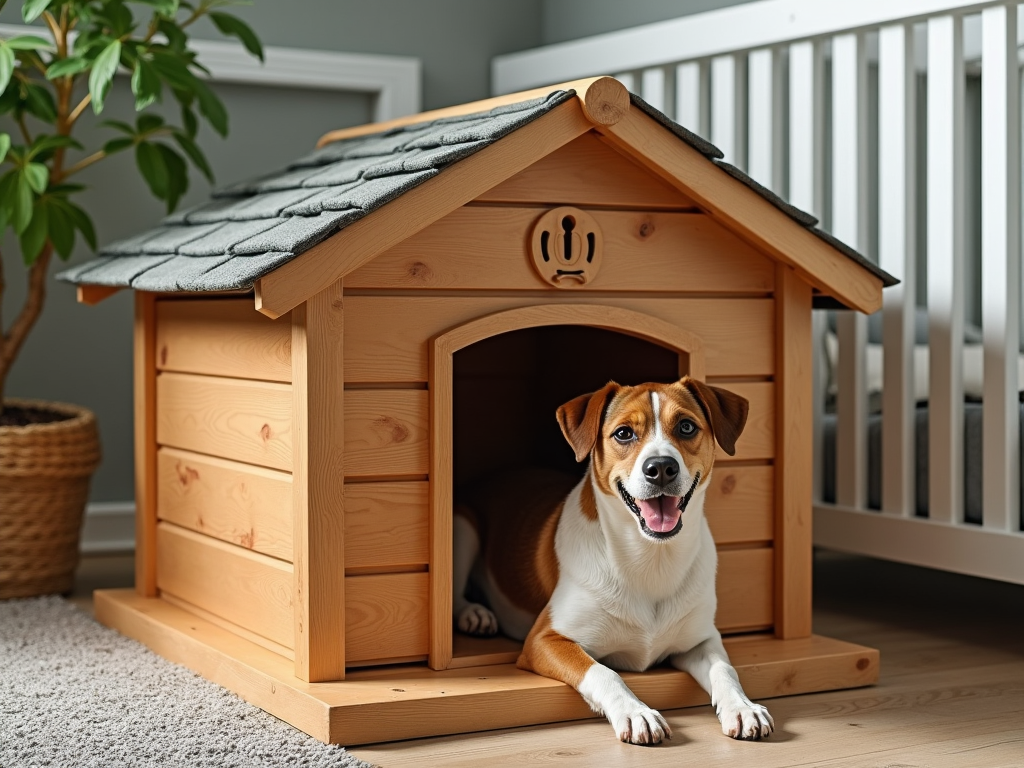Quick facts
Can't find the answer you're looking for? Please get in touch with our friendly team.
Can you leave a dog outside with a dog house?
Yes, you can leave a dog outside with a dog house, but ensure it is well-insulated and protected from extreme weather. The dog should have access to fresh water and shade, and regular checks are essential for their comfort and safety.
How much would it cost to build a dog house?
Building a dog house can cost between $100 to $500, depending on materials, size, and design. Basic wooden houses are more affordable, while insulated or custom designs can be pricier. DIY projects may reduce costs significantly.
Do dogs like a doghouse?
Yes, many dogs enjoy having a doghouse as it provides them with a safe, cozy space to retreat to. A well-designed doghouse can offer shelter from the elements and a sense of security, making it a valuable addition to outdoor spaces.
Does a dog house need a floor?
Yes, a dog house should have a floor. It helps keep the dog dry and insulated from the ground. A raised floor also prevents moisture and pests from entering, ensuring a more comfortable and hygienic environment for your pet.
What do dogs want in a dog house?
Dogs want a dog house that is comfortable, well-insulated, and protected from the elements. It should be the right size for them to stand up and turn around. A raised floor helps keep it dry, and proper ventilation is important for air circulation.
What is the difference between a doghouse and kennel?
A doghouse is a small, outdoor shelter for individual dogs, typically made of wood or plastic. A kennel, on the other hand, is a larger structure or facility that can house multiple dogs, often used for boarding or breeding, and may include indoor and outdoor spaces.
What are the disadvantages of dog houses?
Dog houses can be expensive to purchase or build, and they may require regular maintenance to prevent wear and tear. They can also be too small for larger breeds, limiting comfort. Additionally, if not properly insulated, they may not protect dogs from extreme weather.
Are dog houses a good idea?
Yes, dog houses can be a good idea if they provide shelter and comfort for your pet. They protect dogs from harsh weather and offer a personal space. Choose a well-ventilated, insulated design made from durable materials to ensure safety and comfort.
Category Overview
Introduction
Dog houses serve a pivotal role in the lives of pet owners, providing a sheltered space where dogs can feel secure and comfortable. Beyond mere utility, they enhance everyday life by offering a cozy retreat for your furry friend—whether lounging in the backyard on a sunny day or seeking refuge during rainstorms. A well-designed dog house not only ensures comfort but also complements your outdoor decor, blending seamlessly into your garden or patio.
Functionality
The primary function of dog houses is to offer shelter and comfort to dogs, making them ideal for both indoor and outdoor use. These structures provide dogs with their own personal space, promoting relaxation while protecting them from inclement weather. Some models come equipped with ventilation systems to ensure airflow on hot days, while others have thicker insulation for warmth during winter months. Moreover, many dog houses feature adjustable roofs or removable panels, allowing easy access for cleaning and maintenance.
Design & Style
Dog houses come in a variety of styles and materials that appeal to different aesthetic preferences. Common materials include wood for its natural look and durability; metal for its strength; and fabric-covered options which are lightweight and portable. You'll find variations ranging from rustic wooden cabins to sleek modern designs that fit any backyard theme. Moreover, personalization is key—you can choose colors or embellishments that reflect your home’s decor style, whether it’s farmhouse chic or contemporary minimalist. For instance, if you love a vintage vibe, opting for a wooden dog house with distressed finishes might resonate perfectly with your interior design theme.
Practical Considerations
When selecting the right dog house, consider factors such as size, material durability, and specific usage needs. Ensure the chosen house is spacious enough for your dog to stand up comfortably and turn around easily. Pay attention to the durability of materials; heavy-duty options are great for active chewers or harsh weather conditions. A common mistake is underestimating the importance of insulation or ventilation based on climate—make sure you select features suitable for your local weather patterns! Lastly, assess how the dog house will fit into your space; if yard size is limited, opting for compact designs that still offer ample comfort can maximize functionality.
Comparison and Alternatives
When comparing materials like wood versus metal for dog houses, consider the pros and cons: wood provides excellent insulation but may require more maintenance than metal options which are often easier to clean but less cozy in colder climates. In terms of shape—round versus rectangular—it largely depends on available space and preference; rectangular shapes are typically easier to place against walls whereas round ones can create an inviting nook in any part of the yard. Always align choices with overall room size or garden layout to ensure compatibility within your living setup.
Trends and Popular Items
Current trends reflect a shift towards eco-friendly materials along with stylish designs that blend functionality with aesthetic appeal; think sustainable woods treated naturally without harmful chemicals! Popular items include elevated dog houses that prevent flooding during heavy rains as well as modular designs that can expand as necessary—a practical choice if you're planning on welcoming more pets in the future. As homeowners become increasingly design-conscious about their pets' accommodations, expect to see more customized solutions hitting the market—keeping both pets' comfort and human tastes at heart!


